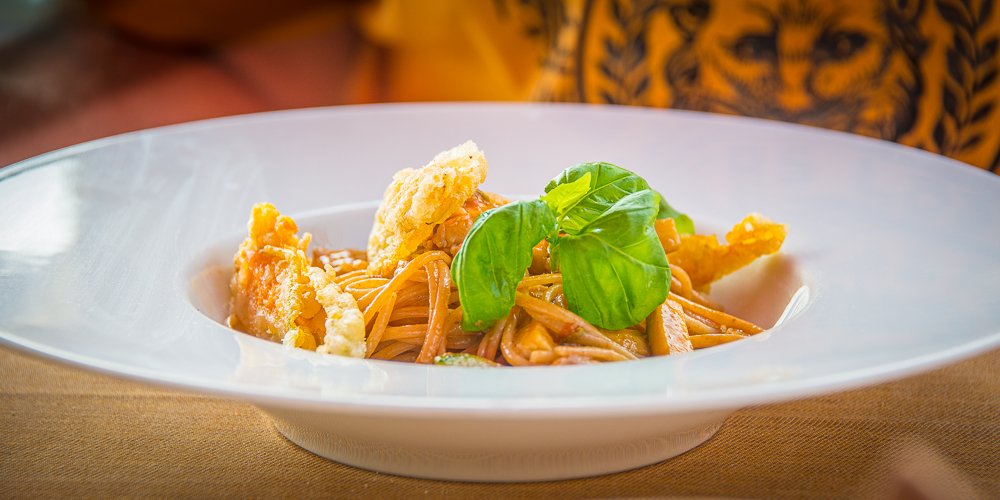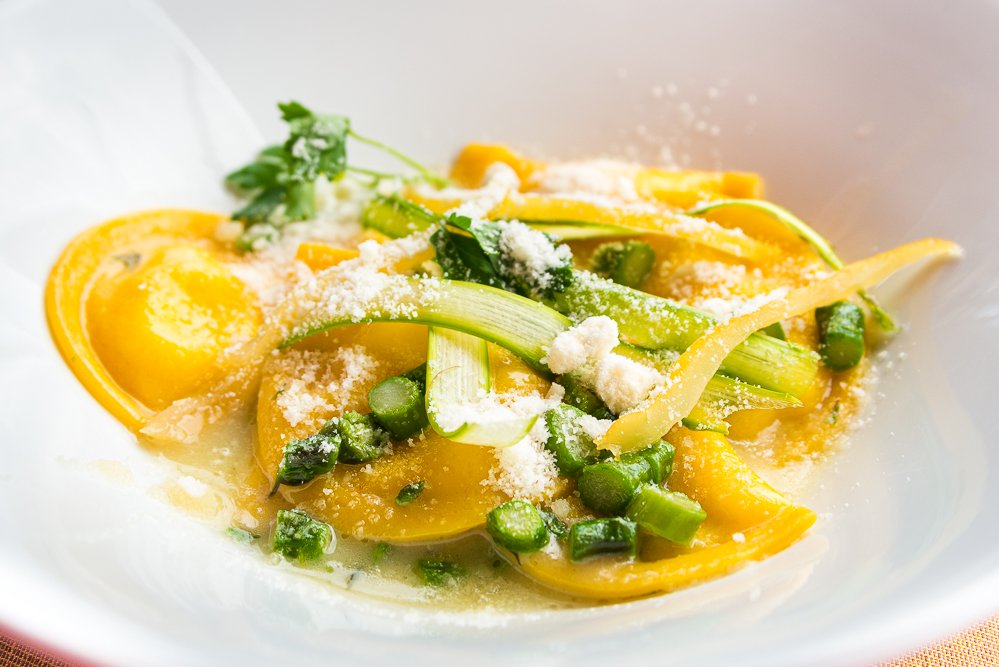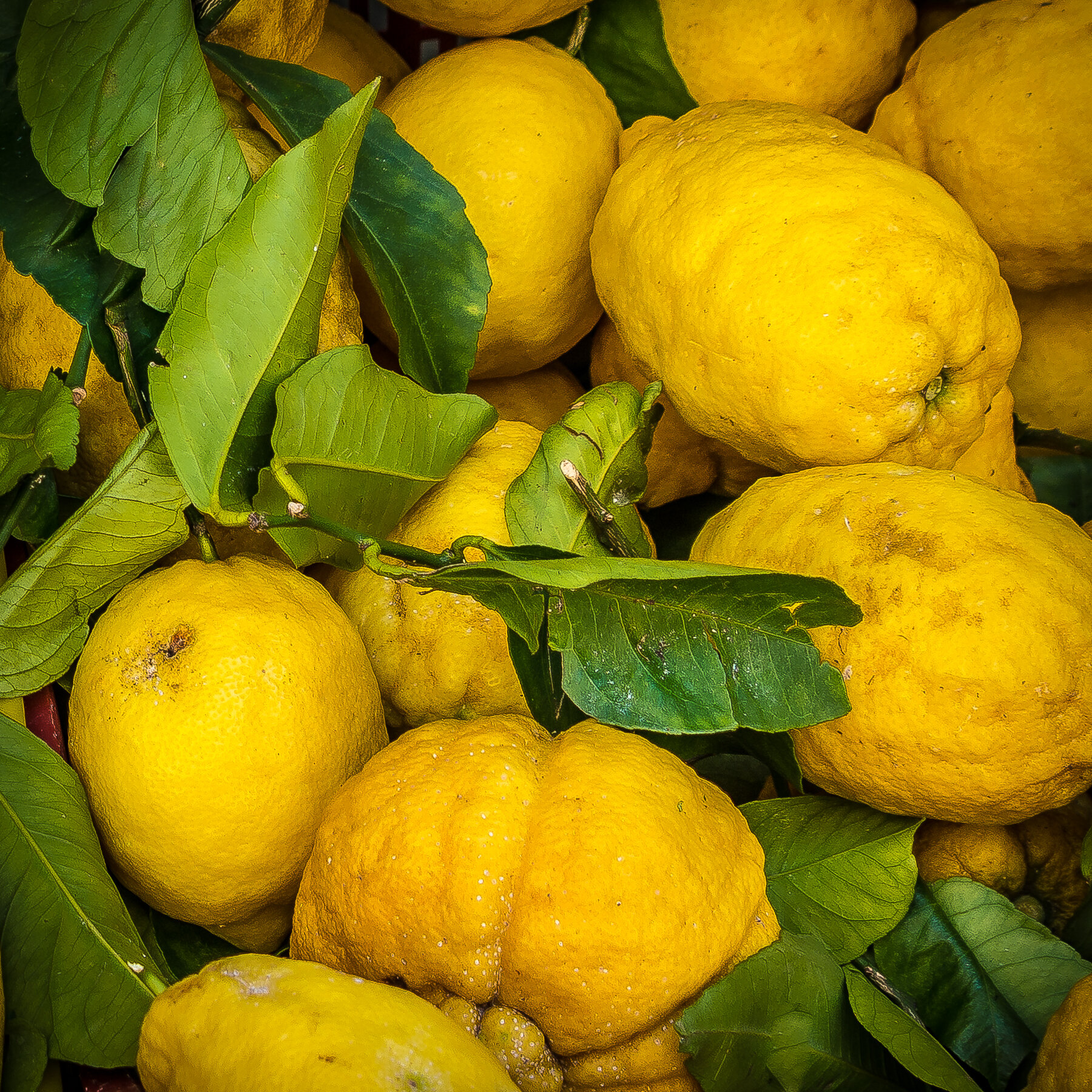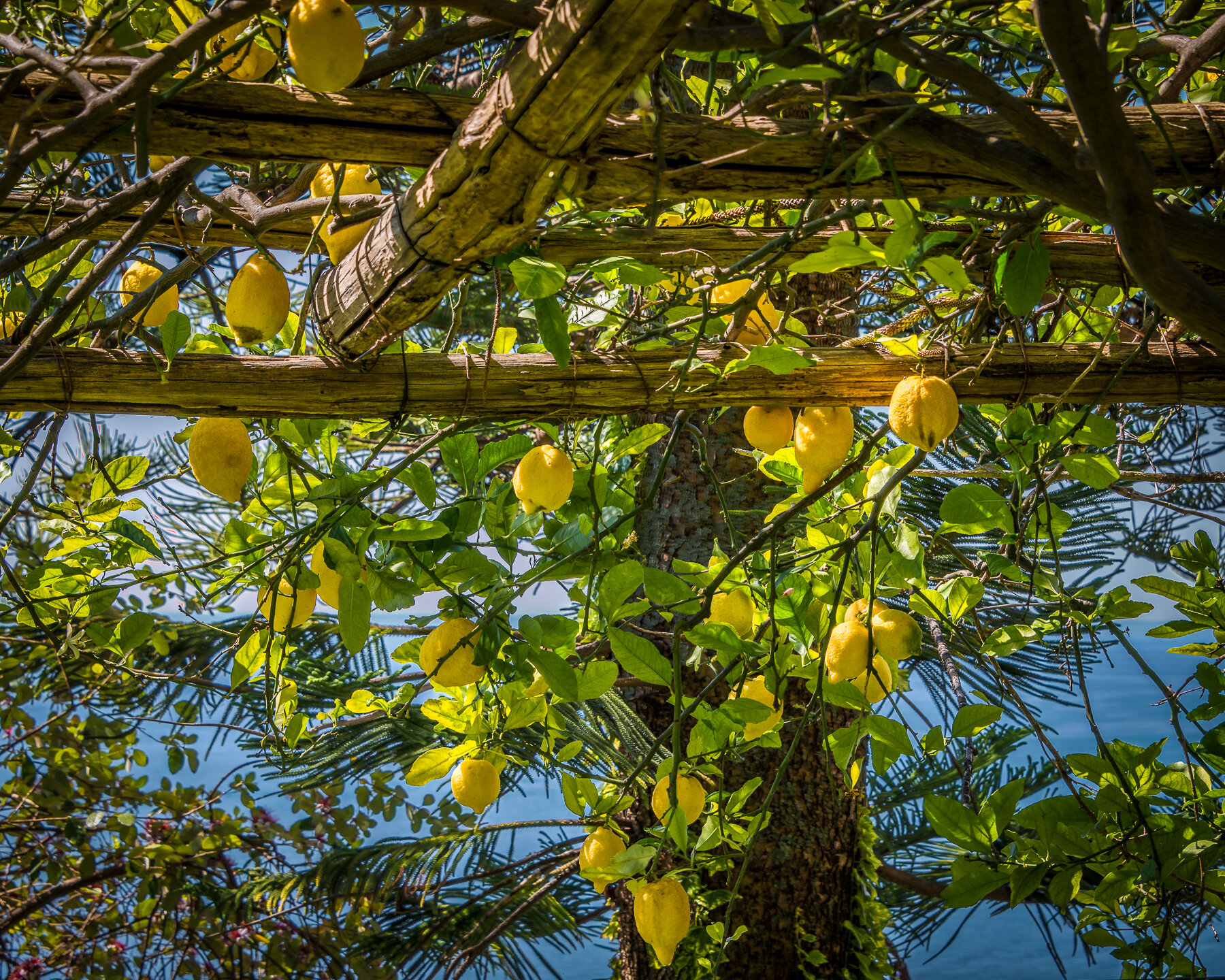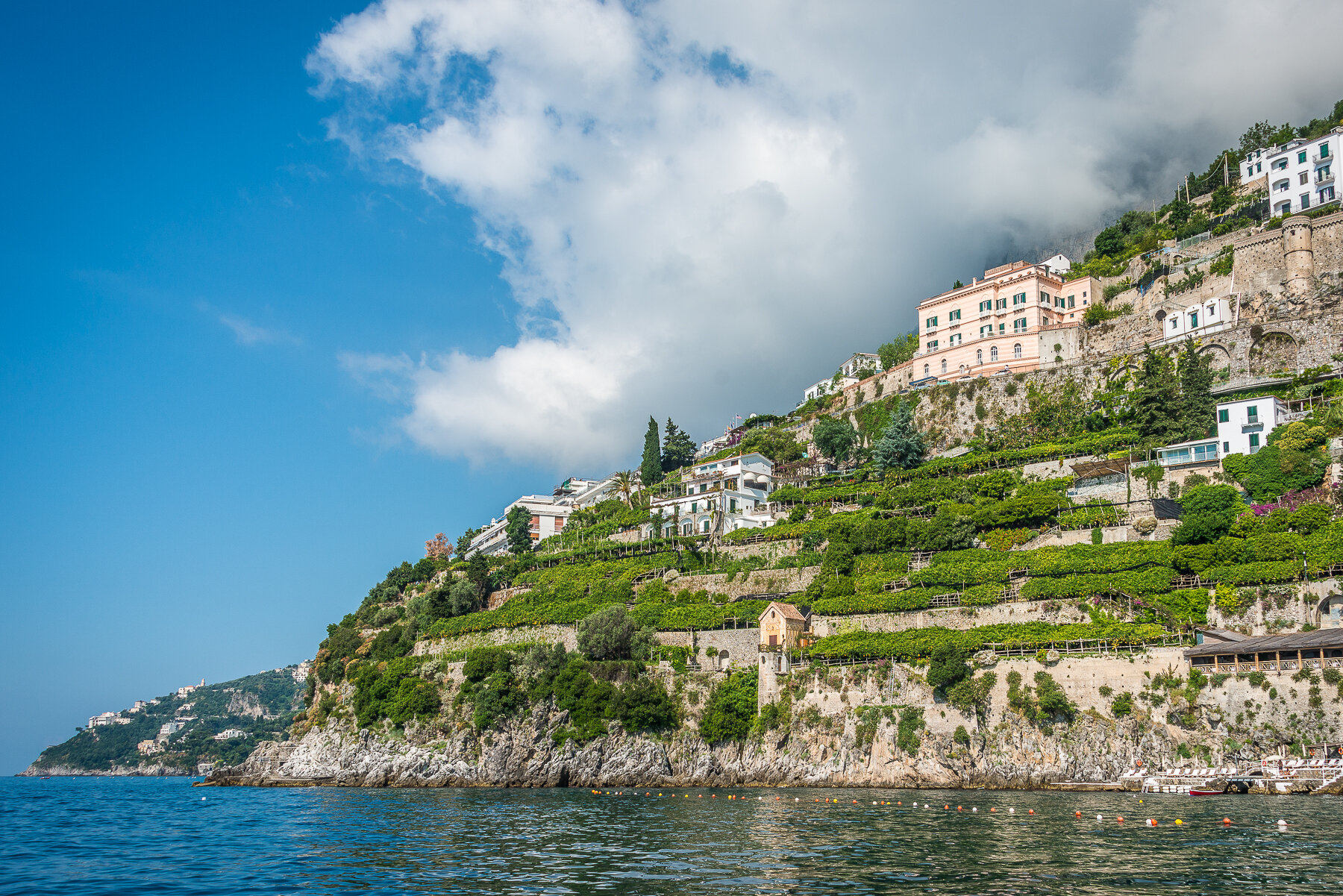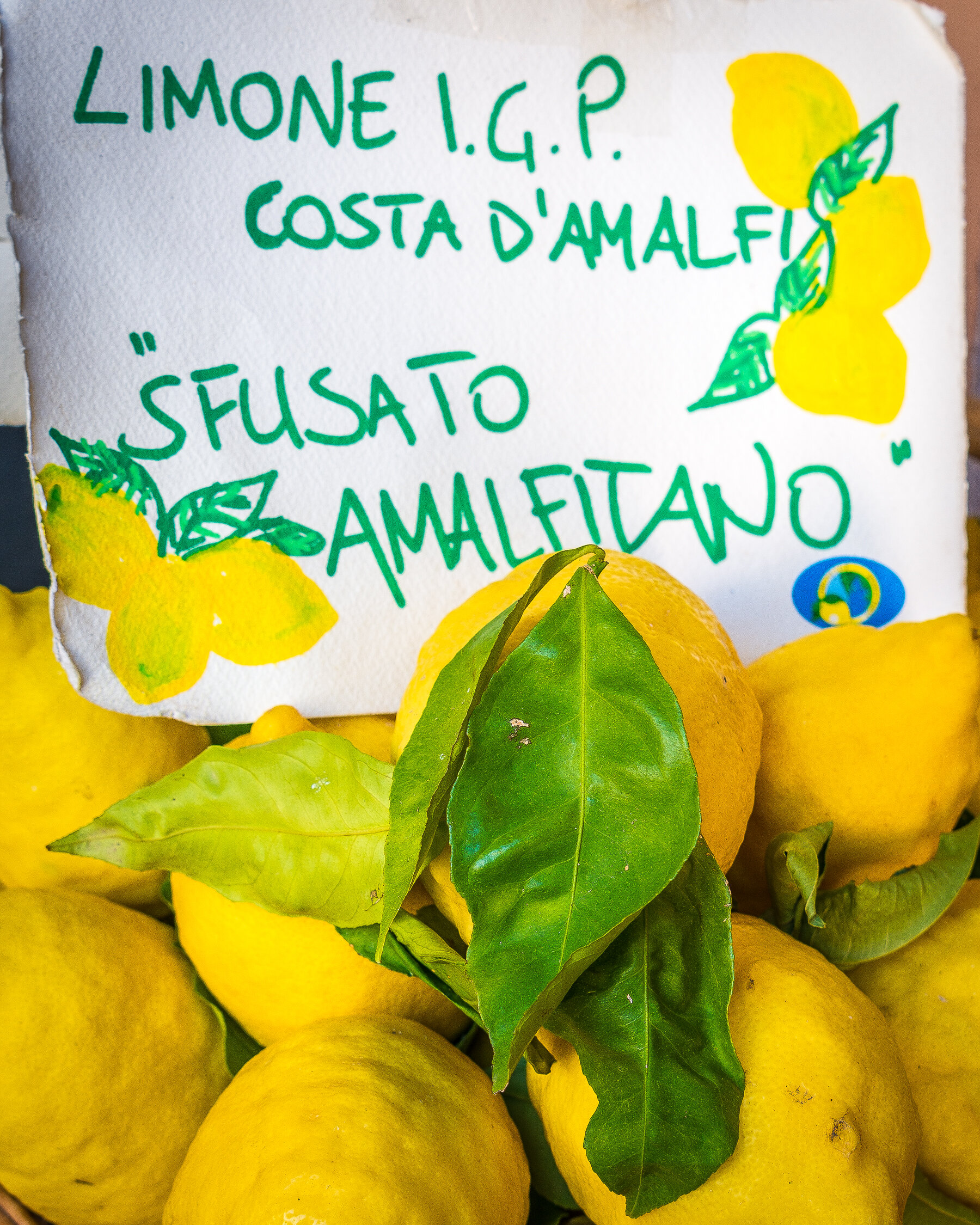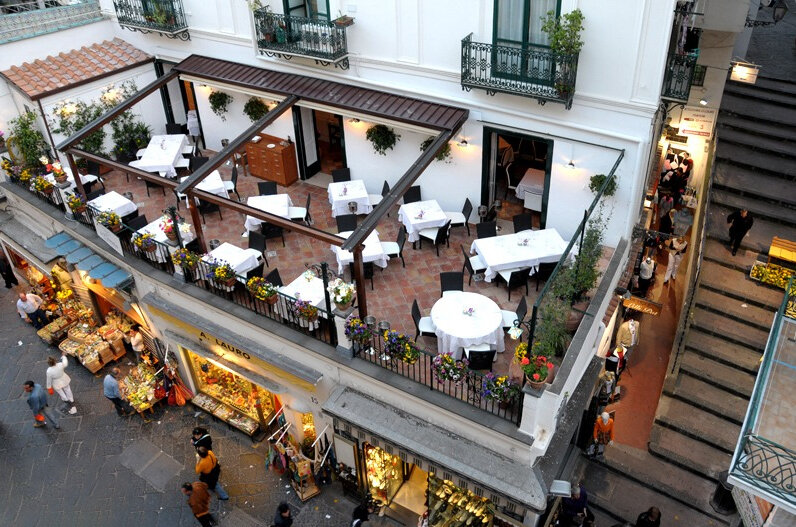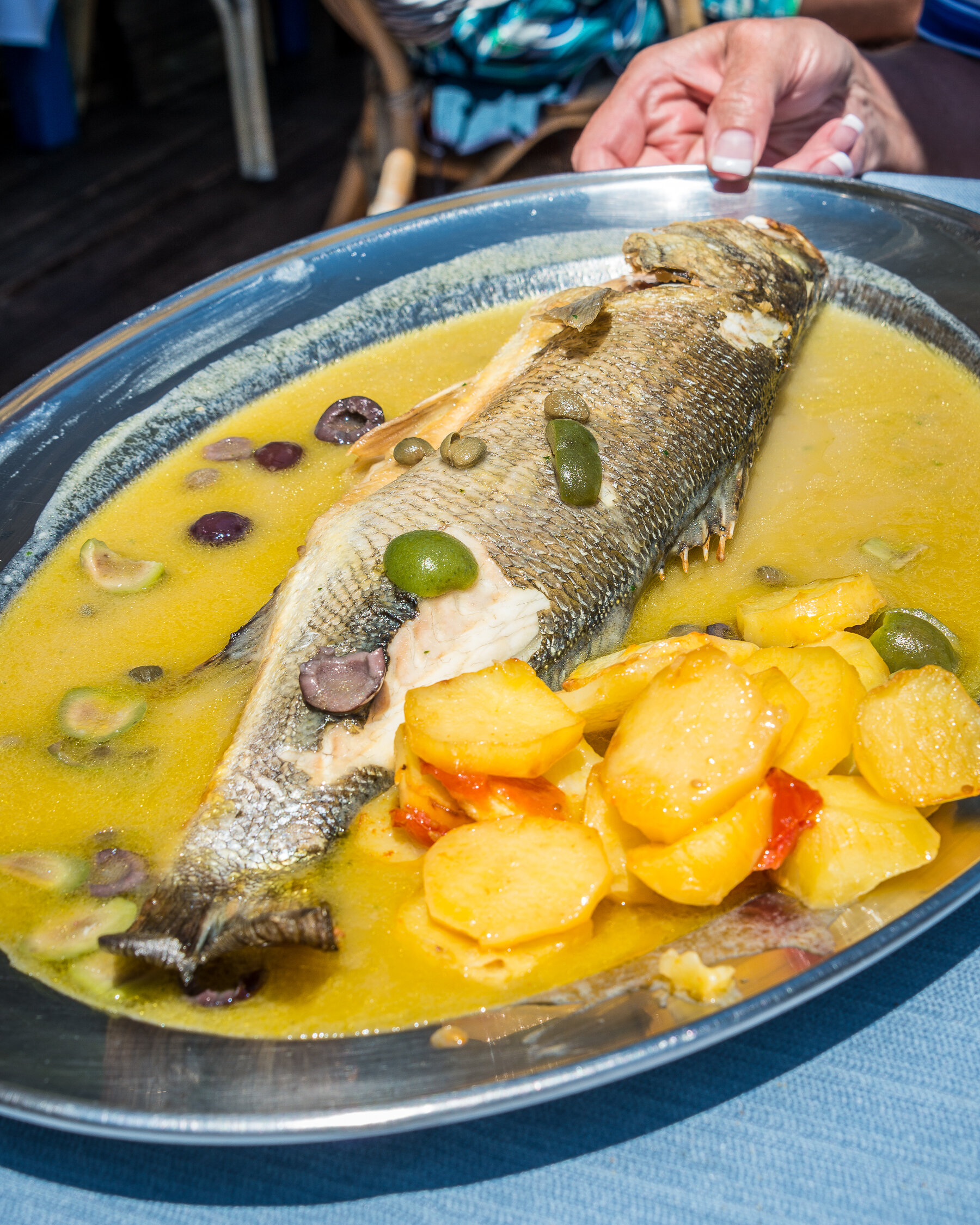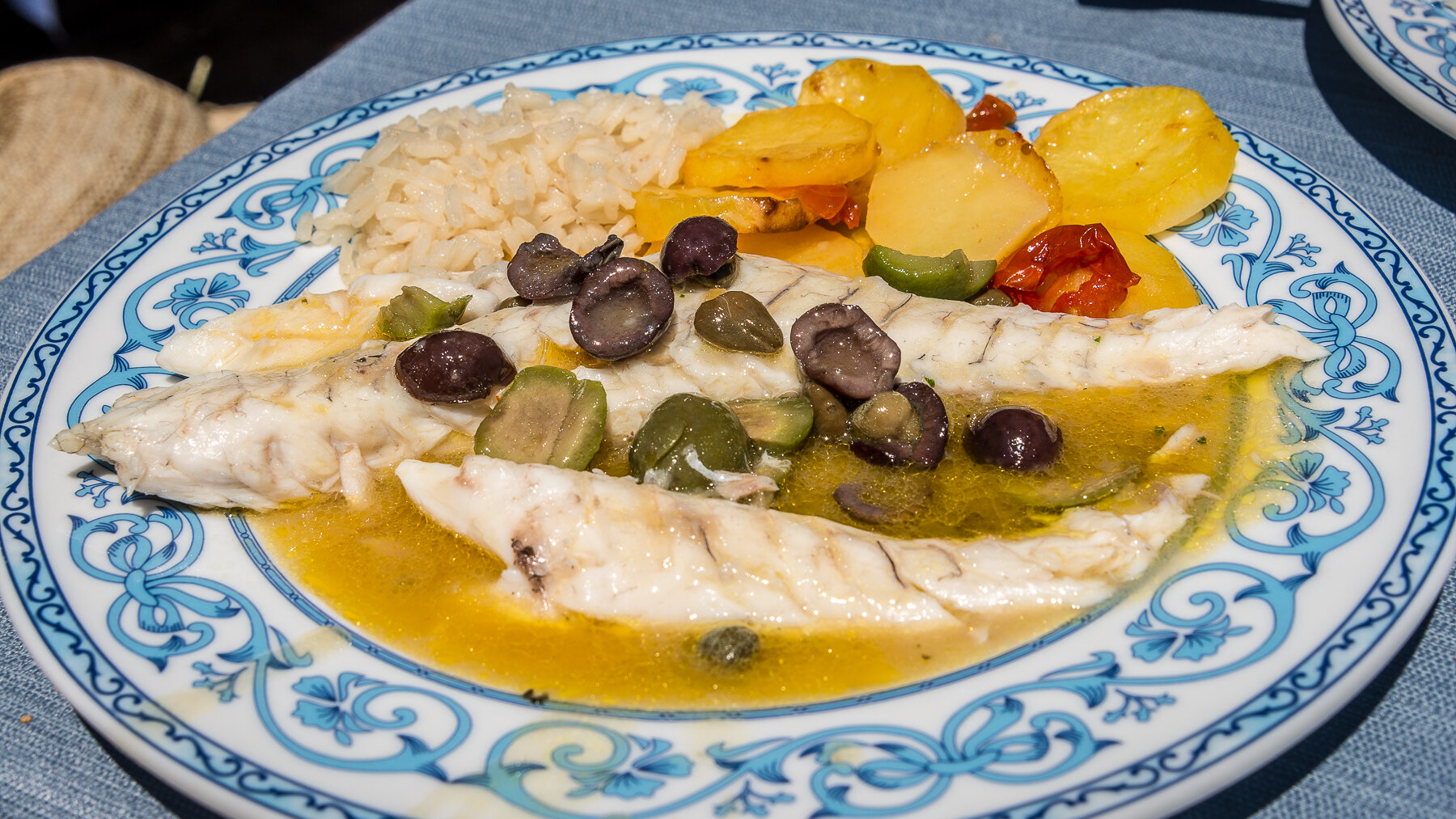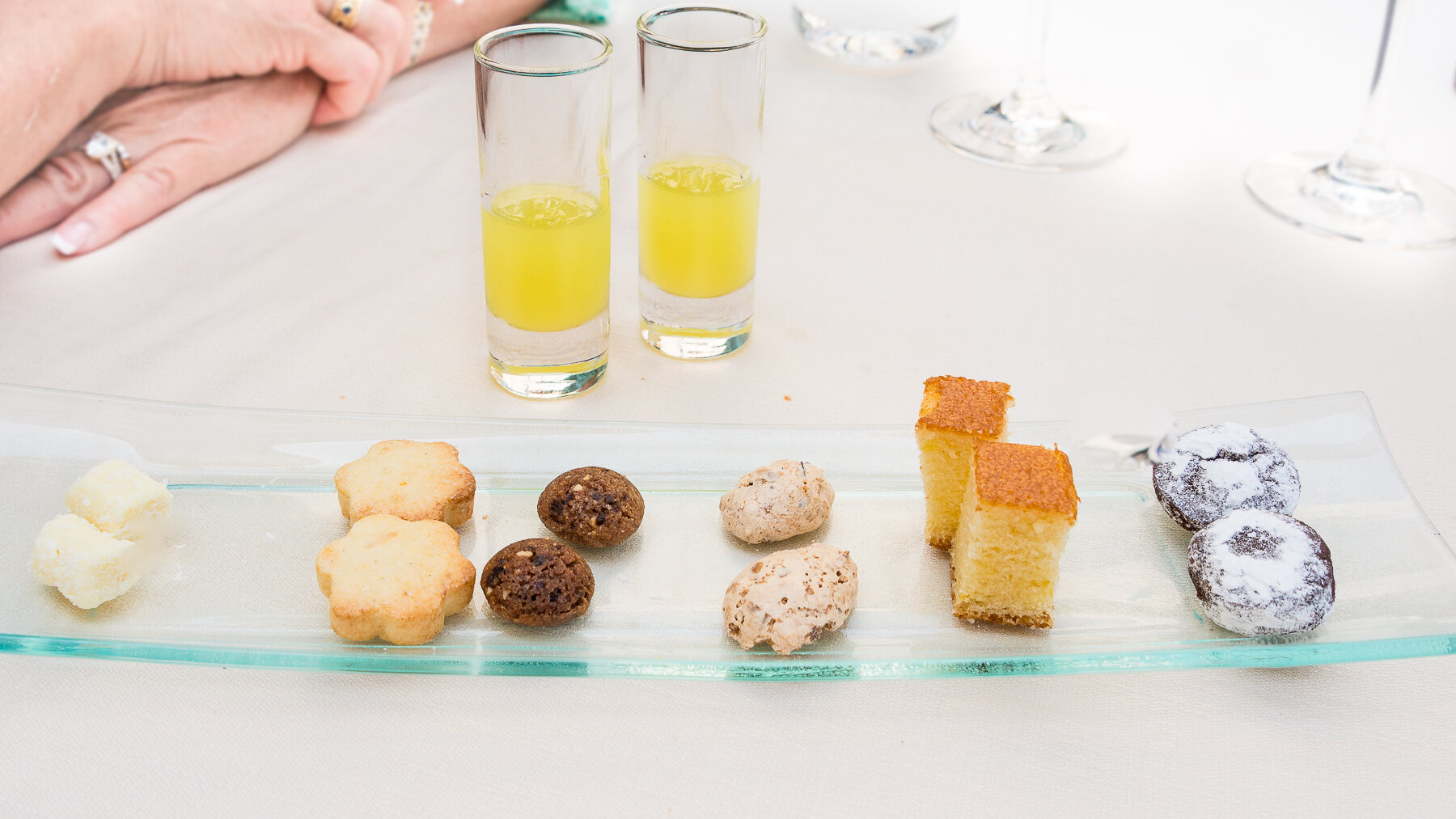Elizabete presents our branzino tableside at La Terrazza on the rooftop of the Hotel Danieli in Venice
Thus far in our Italian dining journey, we’ve sipped an apertivo (my, oh my, that Campari and soda took my breath away!), had some tasty bites of antipasti, and we’ve gorged ourselves on a nice primi.
By the way, how was your “Lasagnette with Pierina's traditional ragu sauce”? Pierina is famous for her ragu at her Trattoria Caprini. I had the “Ravioli filled with goat cheese, and with “datterino” tomatoes and basil”, and I’m glad I did! Those little datterino tomatoes (the size and shape of a ‘date’…’il dattero’ in Italian) were bursting with flavor.
But, as we knew that we would be dining Italian-style, we’ve left room for a secondi, or second main course. Will we have room for the dolci? We’ll see.
So, let’s see what that second main course is all about…
WHAT TO EXPECT OF A SECONDI
When we think of the secondi course, we should be thinking about flesh…whether it be the flesh of the fish (il pesce), or flesh of a mammal like beef of a mature cow (manzo), veal (vitello), lamb (agnello), pig (maiale), or the wild boar (cinghiale). Are you wondering where chicken (pollo) fits in, it is occasionally on the menu, though not as often as even wild boar, it seems.
I want to expand a bit on the fishy part of secondi. In Italy, it is done superbly. Typically, the fish is prepared whole. It is brought out for you to see and admire (yes, be sure to ooh and ahh over it as we did when Elizabete made her presentation to us as seen in the photo, above). It is de-boned on a small cart near your table. It is then placed on your plate and set before you. And then, you’d better eat it before I eat it for you! The flesh of the fish is moist and oh, so tasty. And buttery? Yes! Expect at least one contorno (side dish), like roasted potato, and maybe a green vegetable, like broccolini. Want to see the whole process from presentation to dining? Relive our experience at Da Gemma in Amalfi, here.
WHAT’S ON THE MENU?
Click the image to see a real-life Italian secondi menu…this one from Ristorante Verbano on Lake Maggiore
Just as I did with the primi, I will share with you below actual excerpts from menus of places where we’ve dined…from ristorante, to trattoria, to osteria. If you want to know more about those three categories of dining establishments, as well as four more, then click here.
Please note that the number of menu items in each of the three categories below of seafood, meat and poultry, indicates that actual prevalence of those types of items on the Italian menu; i.e. lots of seafood, a good bit of meat, and not much poultry.
So, here are menu items taken word-for-word from actual, real-life, we’ve-actually-been-there, dining places in Italy. Along with photos, of course.
Frutti di Mare (Seafood)
Fillet of sea bass, grilled fennel and pistachio cream
Turbot with winter scents [yes, just the scent!]
Baked squid gratinated
Mix of fried selection of seafood from the Rialto market
Deep fried soft-shell crabs
Imperial Shrimp with seven spices, shiitake mushroom and red rice
Wild seabass fillet cooked in the oven, on a mirror [what?!] of bread, potato sauce and chicory
Crispy Octopus with cream beans from Lamon and celery sauce
Sea bass melted “Acquerello” rice risotto, lightly smoked, citrus hint, raw scallops
Seafood paccheri, late Treviso radicchio, tomatoes confit, glasswort
John Dory fillet "Antico Martini" style
Turbot fillet, braised Jerusalem artichokes, fresh horseradish, clam sauce -
Seared cuttlefish, its cream and liver, fennel seed sponge, parsley and baccalà sauces
Daily fresh fish from the Rialto market, grilled
Nordic cod confit, “acqua pazza”, kale, nori seaweed flavored potatoes
Turbot fillet, braised Jerusalem artichokes, fresh horseradish, clam sauce
Giant scampi grilled with fried zucchini
Steamed fish flavored with herbs and ginger
Scampi with curry sauce and Pilaf rice
Fried fish from the Adriatic sea
Fillet of sea bass with lime and cumin carrots
Roasted wild eel with honey, bitter orange marmalade, beer, celery cream and mashed potatoes
I can’t move on until I’ve commented on the last item in the frutti di mare category…the eel, or anguilla. Here’s my comment: “Yuck!!!” Though we’ve often seen them on menus (mostly in Venice), we’ve never gotten up the nerve, or insanity, to try them. The sign in the first photo lets us know that these eel were caught in ‘our own lagoon’. The eels in the second photo are alive and squirmy…I’m not even sure how you would hold onto them to dispatch them, nor how one would clean them. Sorry to belabor the point, but they give me the creeps.
Here are photos of more palatable eats in the frutti di mare category.
Just two more seafood photos…these of a lobster that we consumed on the Isle of Capri. Here it is as Ellen selected it right from the tank, and then as it appeared on our plates…one-half for each of us. I must say that this was One Fine Day! on the Amalfi coast, which you can read about here.
Carne (Meat)
Lamb with offal sauce [an acquired taste, yes?], scent of fennel flower heads, and wild herbs
Fillet of veal with broccoli and cabbage
Slow-cooked beef in Valpolicella wine
Venetian-style veal liver with white polenta and new onion
Jowl braised veal with Valpolicella Ripasso and mashed potato
"Antico Martini" veal petals
Sliced beef Angus with rosemary
Chateaubriand, Béarnaise sauce, grilled vegetables, ratte potatoes
Venetian-style veal liver, polenta in two consistencies
Fillet of beef with Norcia black truffle sauce
The "Florentine" of Sorana T-bone steak (45 days of maturing)
Sorana rib steak (45 days of maturing)
Juniper-flavored venison loin, cranberry jam, pine needle powder, rye and tapioca brittle
Grilled lamb chops with ginger baby carrots and mashed potatoes
Veal liver "Venetian style" with polenta
Pollame (Poultry)
Pigeon with black salsifies in cooked must [maybe a bit of discussion is required here…for ’pigeon’, think quail; for ‘salsifie's’, think a tuber from a plant in the daisy family; and, for ‘must’, think about grape juice, before it is fermented into wine…ok, please continue without further interruption on my part]
Free-range chicken terrine, plum and “pevarada” sauce, three potato pavé
Chicken supreme with "malga" butter emulsion and sage
Duck breast served with honey sauce and Recioto wine [it was soooo good…sorry, I wasn’t going to interrupt]
Not many photos in the poultry category, as it is not very prevelent on the Italian menu. The first photo is duck breast described just above. This was from the fabulous Enoteca della Valpolicella, which you can read about here.
Is your mouth watering? Mine sure is. I hope you enjoyed seeing some of the typical menu items in the secondi category, as well as photos that we’ve taken over the years…just before devouring the secondi.
In the next installment of Eating in Italy, I’ll be covering the dolci, or dessert. In the meantime, if you need to catchup on the earlier installments of Eating in Italy, here are the links:
Eating in Italy — The Courses and Apertivo [the types of dining establishments, the menu, and a sip of an apertivo]
Eating in Italy — Secondi [you don’t need a link, just scroll to the top of the page!]
OK, here’s the deal. Tomorrow it will be St Patrick’s Day. I found a four-leaf clover, which means that I get a wish on that day. I’ll tell you what that wish is (will it still be granted if I divulge it? I certainly hope so). My wish is that I will get to have each course of a meal in Italy with you. That’s it. Let’s work toward that. Until that happens, I say…
Ciao for now,
Steve
Did you get to this article with a subscription to Italy, Our Italy? If not, click here!





























